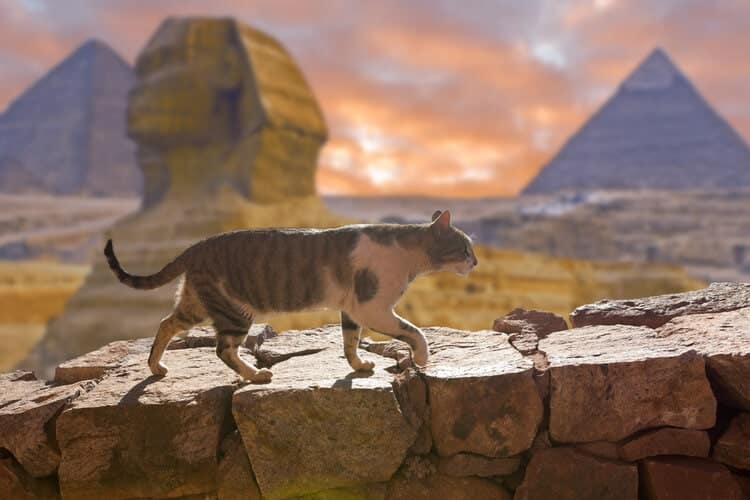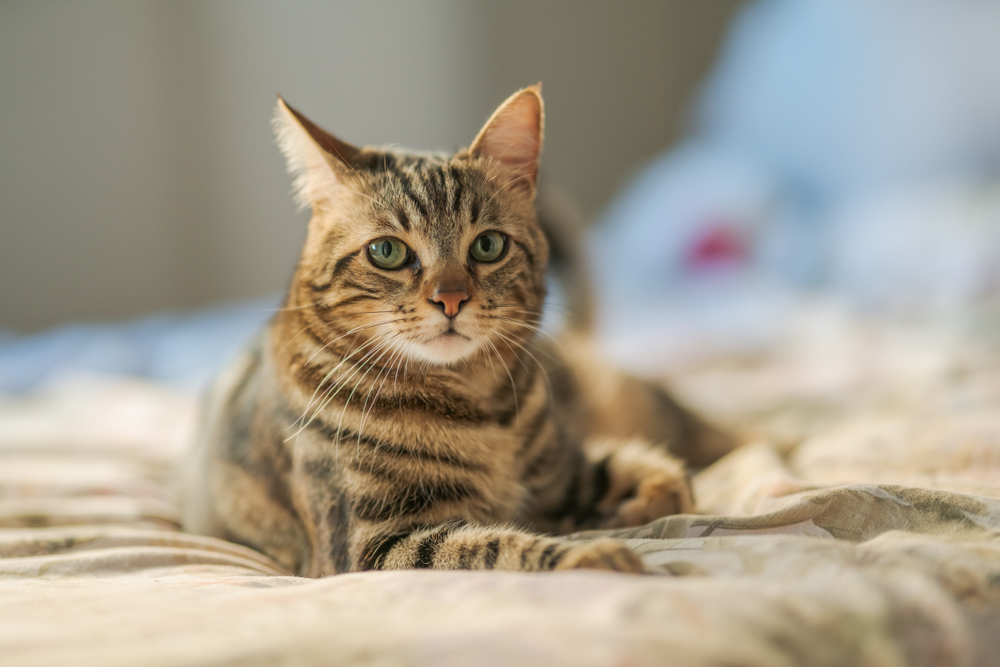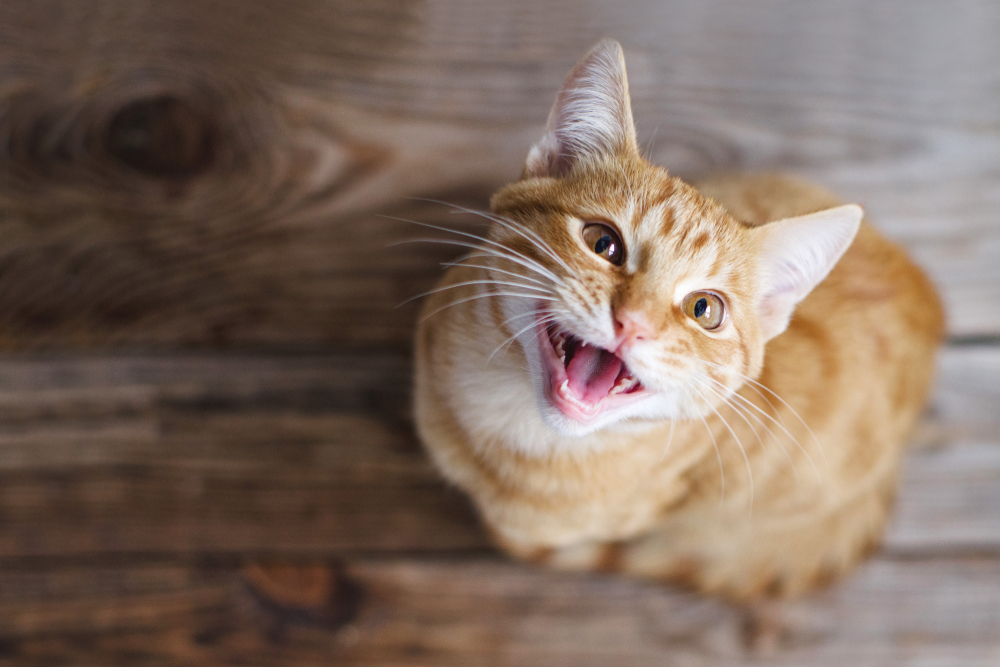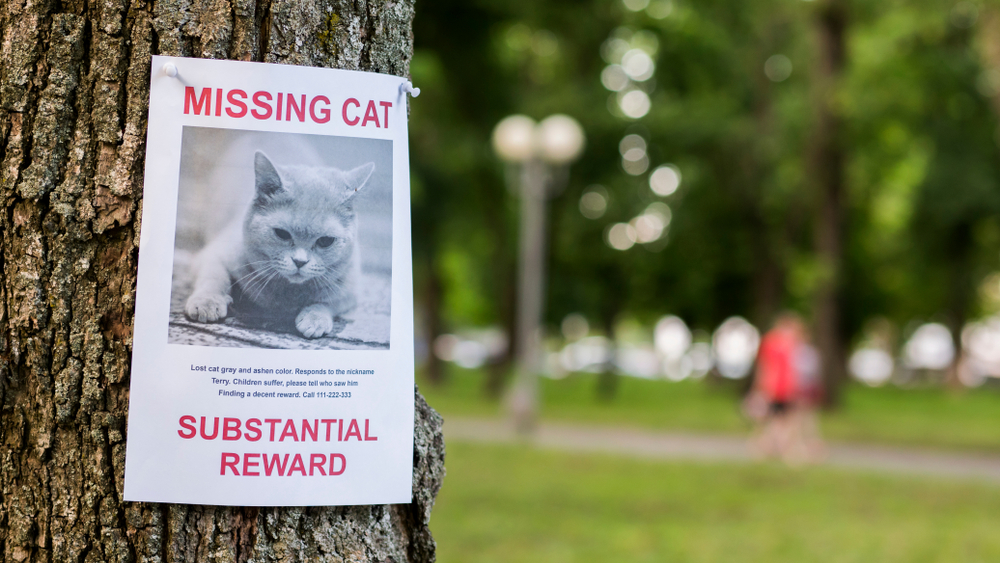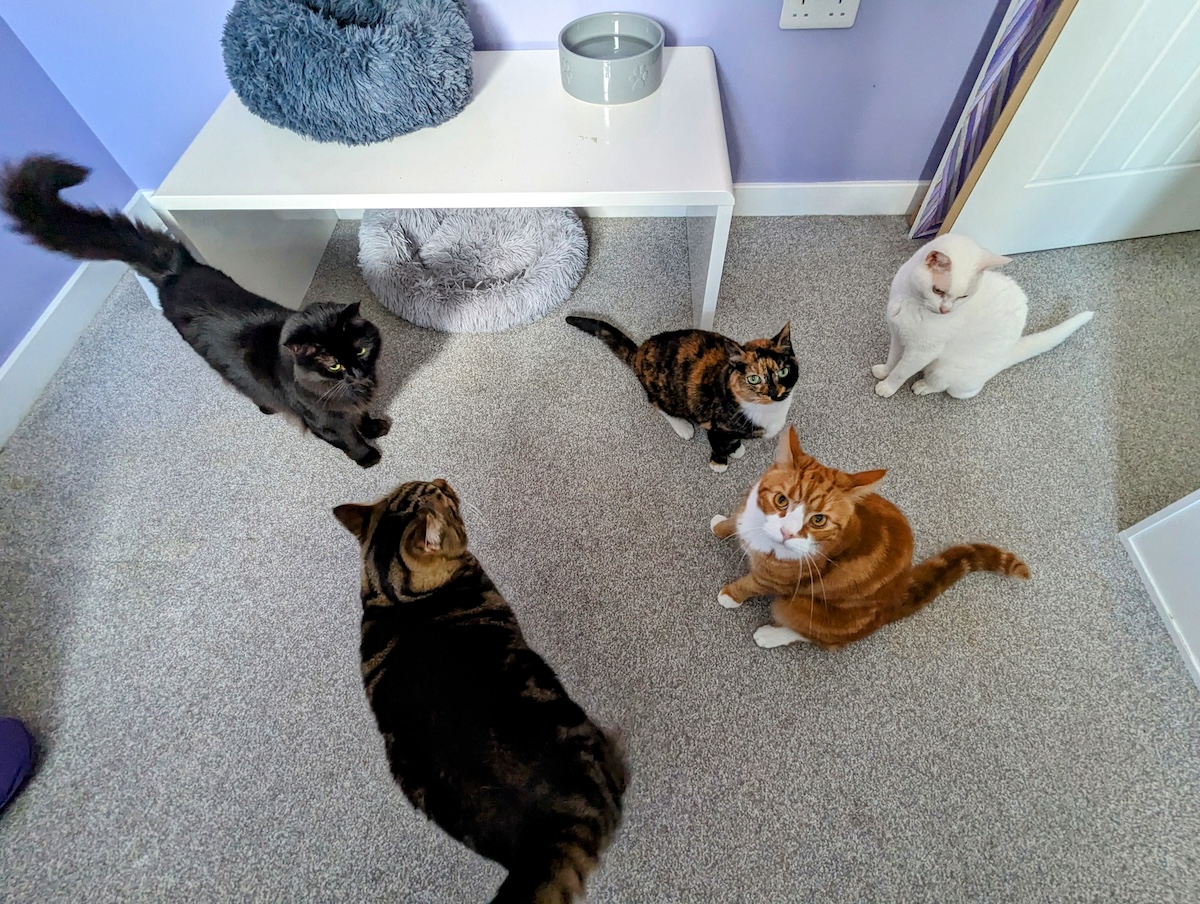Cleopatra is one of the most mythologized Egyptian pharaohs, which have a long history with cats. Legend has it that she owned cats, but is that true? While contemporary records don’t mention Cleopatra owning any cats, some believe that she owned an Egyptian Mau named Tivali. Others claim that she had a pet leopard named Arrow.
We can only speculate about the question, as we lack evidence to support or deny these claims. Join us as we explore the history of cats in ancient Egypt and their essential role in society.

What Kind of Cats Did Cleopatra Have?
Assuming Cleopatra had a pet cat, what type of cat would it have been? To answer that, we need to know what types of cats were present in Ancient Egypt. Two main breeds were present during Cleopatra’s time: the jungle cat (Felis chaus) and the African wildcat (Felis silvestris lybica). If Cleopatra truly owned a pet cat, it was probably one of these two breeds. The two were the most common breeds among mummified cats excavated in Egypt. Undoubtedly, these were buried in honor of the goddess Bastet, who was significantly reversed during the Ptolemaic dynasty.
Like all ancient felines, the cat must have had a striped coat, as the recessive allele responsible for the spotted skin had not come onto the scene. That happened during the Middle Ages. Scientists believe selective breeding for coat color began during this period.
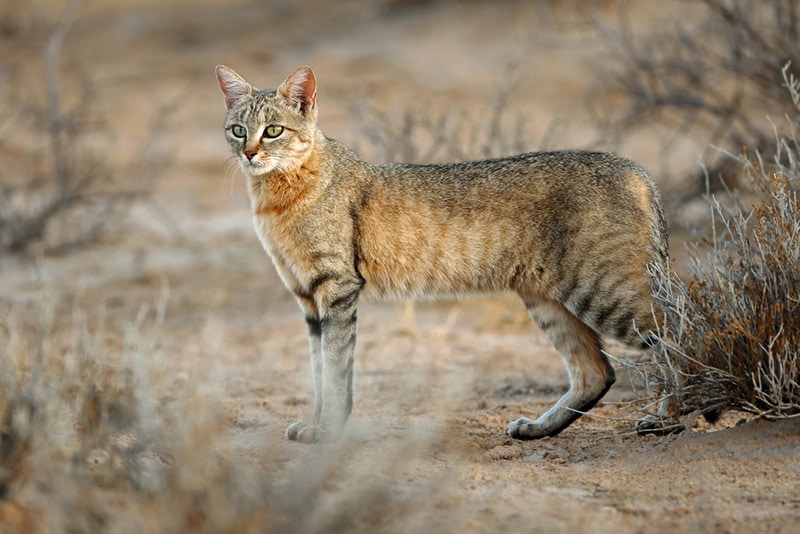
Did Egyptians Keep Cats as Pets?
Although cats were first domesticated in the Near East region, researchers believe Egyptians were the first to treat cats as pets. Initially, the feline was a working animal that hunted rodents and kept vital crops safe. It also killed venomous snakes and scorpions, keeping the populace safe. But as centuries passed, the role of the cat slowly shifted to that of a companion.
They first started wearing collars and accompanying people during bird hunting. A few centuries later, they were dressed in gold, eating from plates of Egyptian royalty. Artistic representation of the cat in Egyptian paintings bears out this gradual transformation. One of the oldest depictions of a domestic cat is a tomb painting dating back to the 21st century B.C. It shows the cat’s initial role as a “rodent hunter.” By 1350 B.C., nobles buried their royal cats in special pet coffins called sarcophagi. Prince Thutmose depicts his dead cat as a nobleman in one of these tombs.
Cats of the Pharaoh
It is not difficult to imagine that Cleopatra owned a pet cat. If she did, it certainly would not be out of step with what her predecessors did. Cats were already pampered pets in Egypt by the 14th century B.C. Mainly, they were favored by royals and noble families.
Around 1350 B.C., Prince Thutmose buried his beloved cat in a pet coffin, depicting the feline like a nobleman seated across a sacrificial table adorned with meat. The nobles and royals popularized cats among the people1. Ancient Egyptians revered cats partly because their pharaohs had giant cats. The pharaohs so loved their cats that they dressed them in gold and permitted them to eat from their plates. The lower classes also copied this behavior, adorning their feline pets with jewelry.
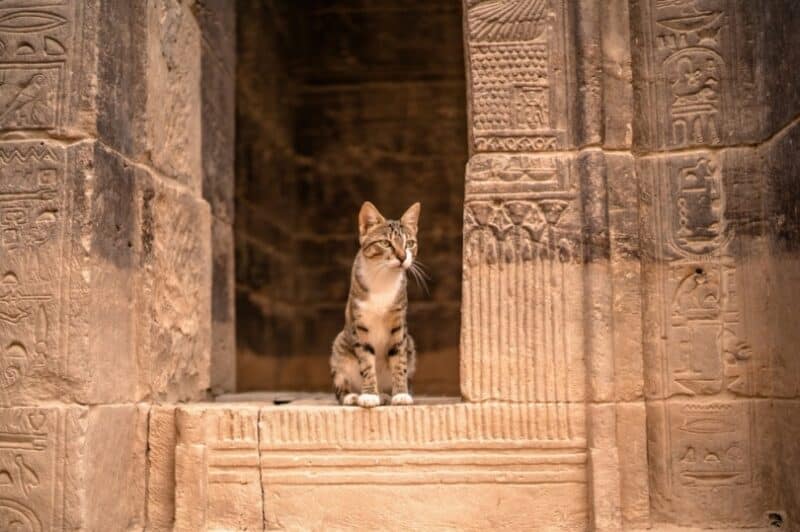
Egypt and Cat Worship
The reverence for cats only grew stronger as time passed. The Egyptians grew fonder of the feline, admiring their complex nature. They particularly marveled at their dual character. Sometimes, they were sweet and gentle; other times, they were warrior-like—swift and aggressive. The Egyptians hoped the reverence would defy death. They believed that companionship with one’s cat would continue past the grave. That is why they depicted cats on tombs alongside family members and other treasures they held dear while alive. One example is the cat painting on the walls of the Tomb of Nebamun.
This belief was so entrenched that they would mummify cats and place them in their companion’s tombs. One reason for doing that was to enable the diseased to inhabit the cat’s body in the afterlife. Contrary to popular belief, Egyptians did not worship cats. Instead, they associated the felines with gods and goddesses they believed shared similar characteristics. The cat was merely a vessel the gods adopted. You can understand why anyone would consider that possibility, though: the reverence for cats in ancient Egypt was so high that they were willing to sacrifice their country.
According to Polyaenus, a historian in the 2nd century A.D., Persian general Cambyses II took advantage of that to capture Egypt in 525 B.C. Since Cambyses II was aware of the Egyptians’ veneration of cats, he painted the image of Bastet on his soldiers’ shields. He also lined up animals that the Egyptians adored on the frontline. Shockingly, the Egyptians surrendered, and the Persians took over the country.
The Egyptian Cat Goddess
Bastet is the most famous Egyptian feline goddess. At first, she was depicted as a lioness. But her image changed to a cat around 1500 B.C. The cult of Bastet reached its peak during the Ptolemaic dynasty. Although not Egyptian, the Greek Ptolemies joined in revering the feline goddess. Since Cleopatra lived in Alexandria, it is not far-fetched to think she also adored the goddess Bastet. Could that mean that she also owned a pet cat? It is possible. One legend certainly makes this connection.
According to the story, the goddess Bastet gave the pharaoh a necklace with a Cat’s Eye jewel. However, Cleopatra’s favorite cat (Cleocatra) steals the necklace. The pharaoh was so mad that she banished all the cats from the palace. Goddess Bastet embodied both aggressive and gentle qualities. But her depictions typically emphasized her nurturing side. She was considered a goddess of fertility, motherhood, and the household. She kept the family safe like a mother cat protects her kitten.
People would invoke Bastet by wearing cat amulets. They would offer the sculptures as offerings in the hope of favor or as gratitude. Additionally, Egyptians dedicated mummies to Bastet. These were buried in cemeteries dedicated to the goddess. Excavations conducted in the 19th century uncovered thousands of such mummies. There were so many that the British shipped some home for fertilizer.
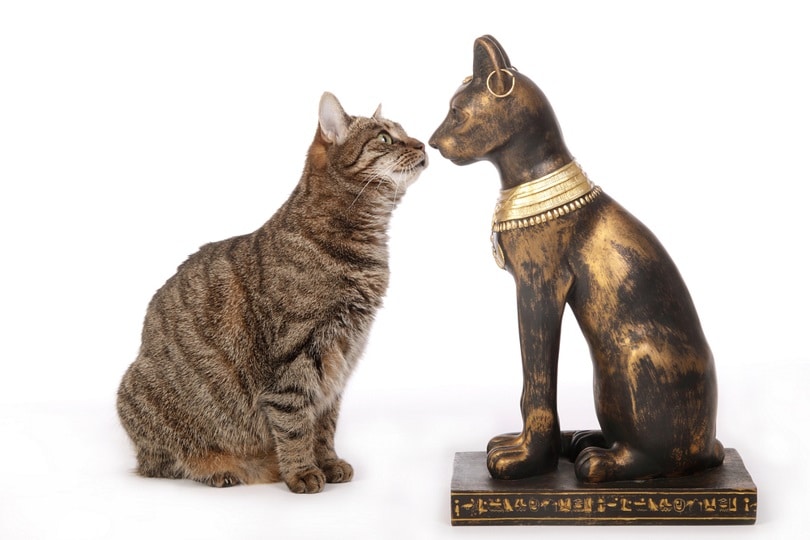
Are Cats Originally From Egypt?
Until 2004, historians believed Egypt was the first civilization to domesticate the cat. Indeed, the region has a long history with the feline that dates back to the 2nd millennium B.C. The first artistic depiction of a domestic cat on a tomb wall dates around 1950 B.C. Similar depictions appear in paintings and sculptures centuries later. Researchers called the long-held belief into question when they excavated the remains of a 9,500-year-old cat on the island of Cyprus in 2004. However, a study conducted in 2017 shined the spotlight back on Egypt. The researchers uncovered the remains of six cats that lived 6,000 years ago.
Although not older than the cat uncovered in Cyprus, further probing suggested the possibility of dual domestication. That would not be far-fetched since animals like dogs were domesticated multiple times. Although that debate is still in the air, one thing is sure: Egypt is credited for transforming the working felines into the lovable pets we know today. It was through breeding that the Egyptians successfully tamed the felines by selecting cats that were easier to have around. As a result, the wildcat transformed into a more social and less territorial animal.
 Conclusion
Conclusion
The historical records are not clear on whether Cleopatra owned any cats. However, it is not a far-fetched idea if you consider the rich cat history of ancient Egypt. The cat symbolized the gods and goddesses of Egypt and was highly revered among commoners and nobles alike. Ancient Egyptian families had at least one in the home.
Cleopatra lived in Alexandria and adopted Egyptian culture, including the language. So, the Egyptians’ love for cats could have rubbed off on her. Nevertheless, none of these facts proves that the last pharaoh of Egypt had a cat. Until such evidence emerges, the question is still up in the air.
Featured Image Credit: Mountains Hunter, Shutterstock

